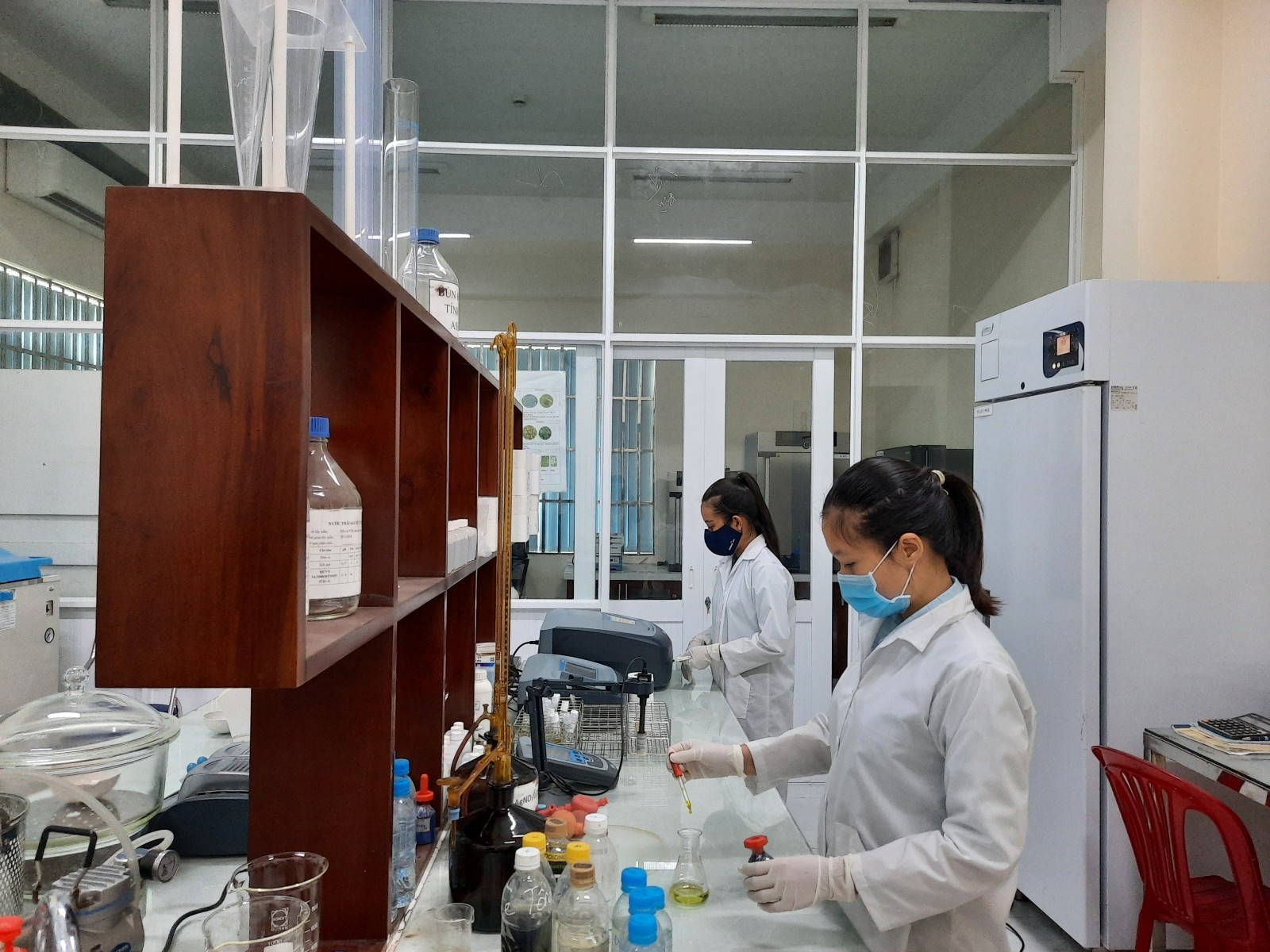To improve capacity and benefits of the connection of domestic sewerage infrastructure
Di An City Wastewater Treatment Plant is part of the drainage and wastewater treatment system in the area, part of the South Binh Duong Water Environment Improvement Project, which has a total investment of more than $115 million. The factory officially started to operate in November 2018. In order to enhance capacity and benefits, the factory is encouraging local people connect to its system.

Domestic wastewater treatment system at Di An City Wastewater Treatment Plant.
To meet all standards
Currently, capacity of the plant is about 8,500 - 9,000m3/day night, reaching 42.5 - 45% of design capacity (20,000m3/day night). Wastewater after treatment reached QCVN 14:2008/BTNMT (column A) standards before being discharged into the environment. The wastewater collection network in Di An area has a collection area in 4 wards: Tan Dong Hiep, Nhat An, Dong Hoa, An Binh and Tan Phu 1 quarters (Tan Binh ward) with a total of 25,969 connecting boxes, 183km of pipes of all kinds. As of 31st Aug 2020, Di An City has 2,657 households participating in domestic wastewater connection (including 2,167 family households and 490 service households), the connection rate was 10.23%. On average, 80-100 households register for the connection every month. In particular, Dong Hoa ward has a connection rate of 14.06%, the highest in the city.
Nguyen Ngoc Diem, Deputy Director of Di An Wastewater Treatment Plant, said: “Currently the plant uses ASPR technology to treat domestic wastewater. Before wastewater is discharged into the environment, it will be disinfected by an UV system, no chemical residues, meeting the 14the standard of Ministry of Natural Resources and Environment, and be very friendly with the environment. Besides, during the treatment process, there are online devices to monitor wastewater treatment 24/24 hours, operate automatically and semi-automatically, under the supervision of Department of Natural Resources and Environment”.
To join hands to protect water resources
Currently, the connection rate of the city is still low, domestic wastewater of households is being discharged directly into canals, sewers and streams. The direct discharge into the environment will pollute, cause direct dangers that are difficult to remedied. Dirty wastewater causes many harms, such as polluted water sources, contaminated soil, dead fishes, contaminated vegetables, no clean water source, no clean food to use.

Laboratory of water samples
Ms. Nguyen said: “When connecting to the treatment system, people contribute to improving the water environment. The connection to domestic wastewater drainage infrastructure will reduce public health risks. Wastewater is collected directly into the system, so there is no need to set up septic tanks, no cost for sucking septic tanks. Participating in the connection of domestic wastewater drainage infrastructure is to contribute to the protection of the living environment, protection of groundwater, surface water, and aquatic organisms, and improving life quality, urban beauty”.
Phan Hoai Trang, a resident of Dong Hoa ward, Di An City, said: “Previously, domestic wastewater flowed down into pits dug by households themselves. Whenever a pit is full, it not only obstructs the wastewater drainage but also causes bad odors, affecting family activities. Since being informed and instructed by local wastewater treatment plant, my family registered for wastewater treatment connection. I realize that this is an activity that brings benefits to people's lives, contributes to protect water resources, protect the environment and people's health”.
To enhance dissemination
Currently, the rate of domestic wastewater collection and treatment connection in Di An City is still low. The reason is that the wastewater collection system is a separate drainage system (collecting only wastewater, not collecting rainwater, directly connected, bypassing septic tanks), quite new to the people. Besides, people's awareness of separate wastewater collection system and environmental protection is still limited, so it need more time to persuade people into connecting to the system. In addition, people have built solid houses, hence they are afraid to dig inside their house, affecting their daily activities. The cost of connection is fairly high.
Ms. Nguyen said: “The wastewater collection system collects only wastewater, not rainwater. Alleyways have been flooded due to heavy rains (most of these alleys have no rainwater drainage system), some people opened covers of collecting system, making rainwater mixed with garbage and sand falling into the system, causing congestion; then sewage overflows onto roads, pollutes the environment, affects urban beauty and endangers people”.
“To improve functions and benefits of this project, Di An Wastewater Treatment Plant is working with wards to intensify communication and persuade people to connect to the system, as well as supports people in the construction and maintenance of the system afterwards. Local government enhance propagation to raise people's awareness of environmental protection and connection of wastewater treatment”.
Reported by Phuong Anh - Translated by Ngoc Huynh
- Vietnam treasures role of UNESCO: Foreign Minister (26/04)
- Enterprises want clearer regulations on seafood production (26/04)
- Socio-economic indicators increased over the same period (26/04)
- Connected traffic and upgraded urban areas (26/04)
- Impressions on the development journey (25/04)
- Ben Cat Town awards certificates of 12 typical rural industrial products in 2024 (25/04)
- Binh Duong Customs Department holds dialogue meeting with Korean businesses (25/04)
- Businesses concerned about rising exchange rate pressure (24/04)
 Connected traffic and upgraded urban areas
Connected traffic and upgraded urban areas
 Binh Duong Customs Department holds dialogue meeting with Korean businesses
Binh Duong Customs Department holds dialogue meeting with Korean businesses
 Impressions on the development journey
Impressions on the development journey
 Businesses concerned about rising exchange rate pressure
Businesses concerned about rising exchange rate pressure
 Policy credit requires local entrusted capital source to balance
Policy credit requires local entrusted capital source to balance
 Thuan An city in striving to fulfill type-1 urban criteria
Thuan An city in striving to fulfill type-1 urban criteria
 Local real estate market strongly attracts foreign investors
Local real estate market strongly attracts foreign investors
 Firm steps of reforms
Firm steps of reforms
 Provincial enterprises are ready to join the global supply chain
Provincial enterprises are ready to join the global supply chain
 Infrastructure planning to develop modern ecosystem of modern logistics
Infrastructure planning to develop modern ecosystem of modern logistics



